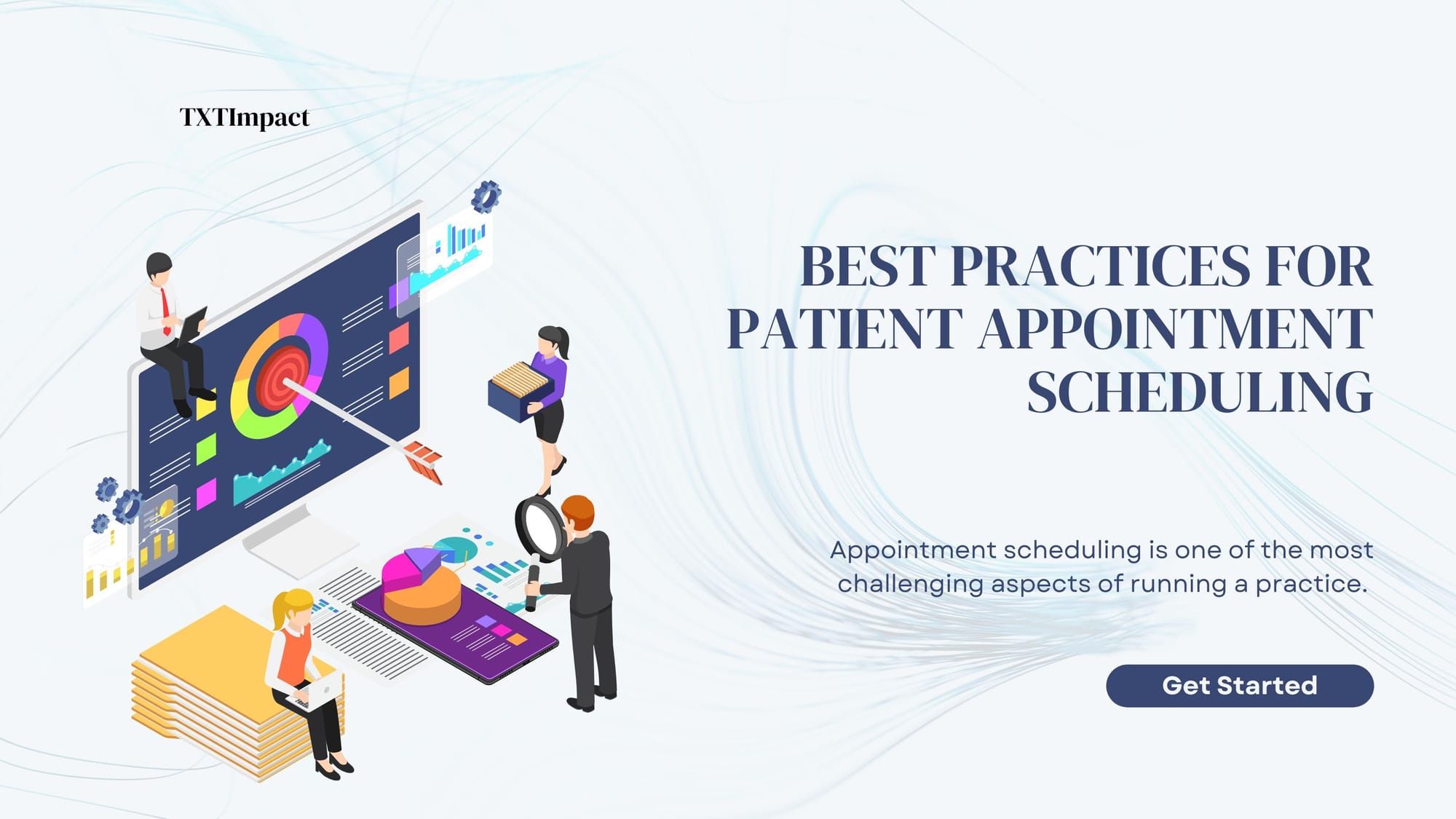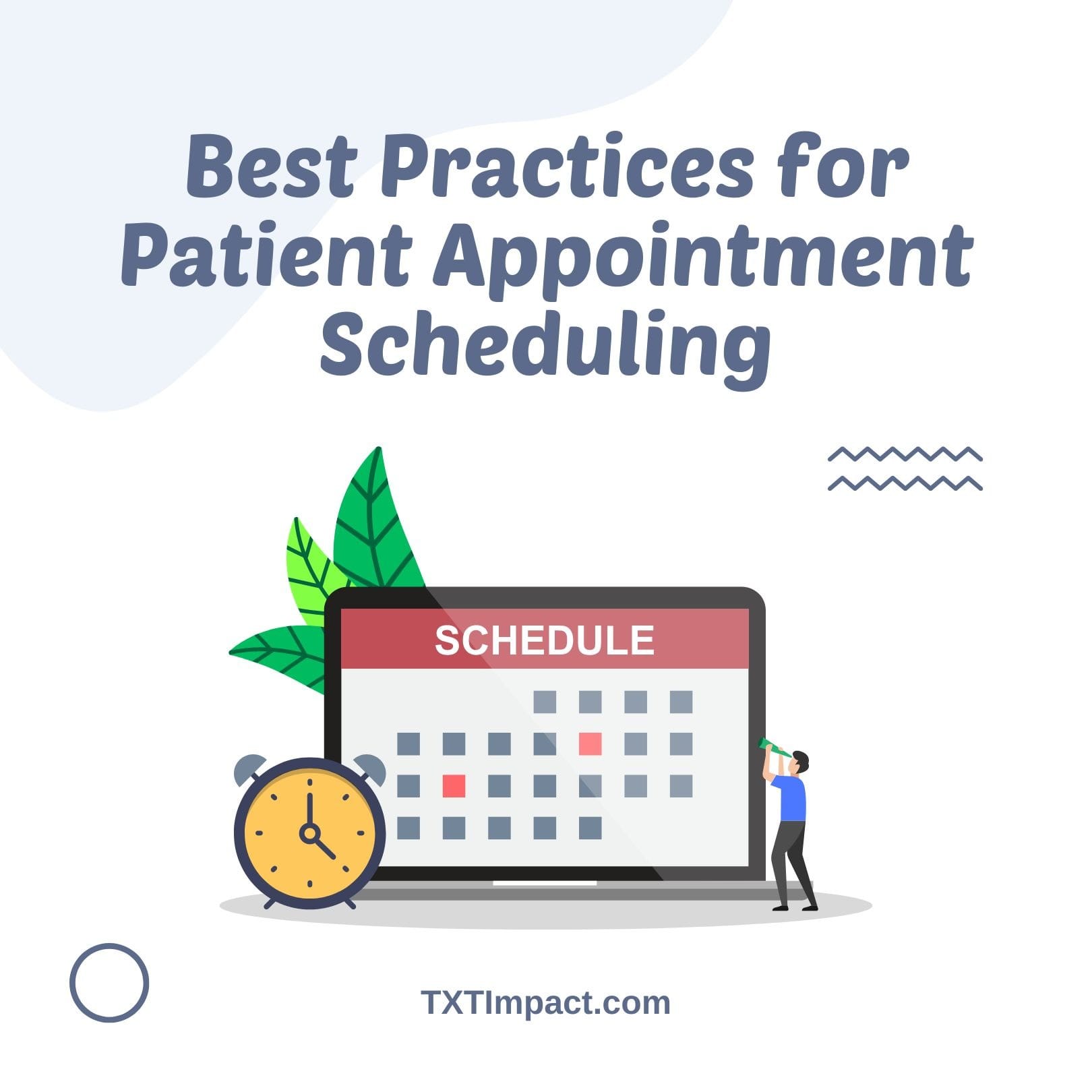Appointment scheduling is one of the most challenging aspects of running a practice. The demands to see as many patients as possible and meet practice and clinical goals often result in patients being bumped or rescheduled without notification. To ensure you’re getting the most out of your appointment scheduling strategy, it’s important to have a solid understanding of how other practices are tackling this challenge. With that in mind, let’s take a look at some key best practices that can help streamline your scheduling process while increasing patient satisfaction and loyalty.
Make it easy for your patients to set up appointments
Your patients are your business assets – use their scheduling needs as a key indicator of their satisfaction and loyalty. To achieve this, you have to make it as easy as possible for them to schedule appointments – they should never have to ask to be seen, no matter what their health or circumstances.
Easy Steps You Can Take Right at the Doctor
Patient interaction that can help facilitate appointment scheduling: - The first is the doctor’s greeting. A warm, friendly greeting sets the tone for the appointment and can convey your professionalism, confidence, and level of expertise. Physicians who are too reserved or come across as impersonal may make patients feel apprehensive or hesitant to schedule future appointments.
Next is getting a patient’s medical history. Though you’re in the examining room to obtain knowledge about their health and needs, you may still want to take the opportunity to ask about their general wellbeing, including issues with anxiety, depression, stress, etc. If you’ve noticed an uptick in missed appointments by patients who are sharing details about their mental-health needs, addressing this head-on can go a long way towards ensuring they feel comfortable communicating their scheduling needs in the future.
Next on the list is the patient’s examination. Understand that you’re not the patient’s primary care provider, but your role is to offer them medical care and guidance. Therefore, you may want to start with a general overview of their medical history and review examination findings, then move into more in-depth questions, such as, “How do you feel today?
How is your general health, specifically your abdomen, arms, and legs?
How is your breathing, heart rate, and temperature?”
Finally, you may want to remind your patients of their health insurance coverage and restrictions
such as medication or diet restrictions (if applicable), or the fact that they’re not permitted to drive.
Track and analyze your scheduling data
Regardless of how much experience you have in the scheduling realm, it’s essential to track and analyze your scheduling data to ensure you’re consistently filling appointment slots and scheduling slots as close to preferred dates as possible. While a purely visual analysis of your scheduling data can be helpful, it’s essential to roll this data into a formula to understand why certain dates are being filled more often than others. This data can be used to adjust your scheduling strategies and ensure you’re getting the most out of your practice resources. For example, if Mondays and Tuesdays are consistently being booked while Wednesdays and Thursdays are being missed, you may want to look into scheduling on a different day.
Communicate your availability and preferred days
In addition to tracking and analyzing your scheduling data, it’s essential to communicate your availability to patients before they schedule appointments. When you communicate your availability, you’re not only letting them know when they can expect to see you, but you’re also educating them on your preferred days. By telling patients when they can expect to see you and what days you prefer, you’re helping them better understand your availability and avoid scheduling on days when you’ve already made commitments to other patients.
There are a few ways to communicate your availability and preferred days:
If you have an online scheduling system, you can add a message that explains your availability and which days you prefer for appointments.
If you don’t use an online scheduling system, you can include a note on your online portal that explains your schedule and availability.
You can also send a message to patients directly via email or text.
Build a robust appointment booking system
If you haven’t yet, you should definitely invest in building a robust appointment booking system. By implementing a system to manage your scheduling data, you can track, analyze, and communicate your availability to patients while ensuring they have the tools they need to book appointments. A robust appointment booking system can help you streamline your workflow, increase your efficiency, and ensure appointment availability while reducing the likelihood of gaps in your schedule. A robust appointment booking system should be built around the following:
A robust data architecture that provides an optimal level of scalability and redundancy to keep your system up and running in the event of an outage.
A system that is built on a modern, scalable technology platform that can support high volumes of traffic.
A system that provides security that adheres to industry standards, including strong authentication and encryption methods.
A system with a simple, intuitive user interface that makes managing and maintaining the system as painless as possible, while also providing granular controls
Establish an effective workflow for cancellation requests
If you have an online scheduling system, you should have a cancellation policy that's easy for patients to navigate and understand. Once they've booked an appointment, it's essential that you clearly communicate your cancellation policy to patients and let them know how they can cancel their appointments without penalty. Communicate your cancellation policy in a way that's easy for patients to understand, such as by breaking down your cancellation methods into different categories (e.g., phone calls, in-person cancellations, etc.) and provide links to support each policy.
Establish an effective workflow for rescheduling requests
Also, if you have an online scheduling system, you should have a rescheduling policy that's easy for patients to navigate and understand. Once they've scheduled an appointment, it's essential that you clearly communicate your rescheduling policy to patients and let them know how they can reschedule their appointments without penalty. Communicate your rescheduling policy in a way that's easy for patients to understand, such as by breaking down your rescheduling methods into different categories (e.g., phone calls, in-person reschedules, etc.) and provide links to support each policy.
Create a no-show policy for patients who consistently miss appointments
Finally, it's essential that you create a no-show policy that's easy for patients to navigate and understand. Once they've registered with your practice, it's essential that you clearly communicate your no-show policy to patients and let them know how they can sign up for a notification system that notifies them when their appointments are being booked.
Bottom line
When it comes to scheduling appointments, the better you understand how your patients’ schedules are currently structured, the better equipped you’ll be to address their needs. Additionally, it’s essential that you track and analyze your scheduling data to ensure you’re consistently filling appointment slots as well as scheduling slots as close to preferred dates as possible.


